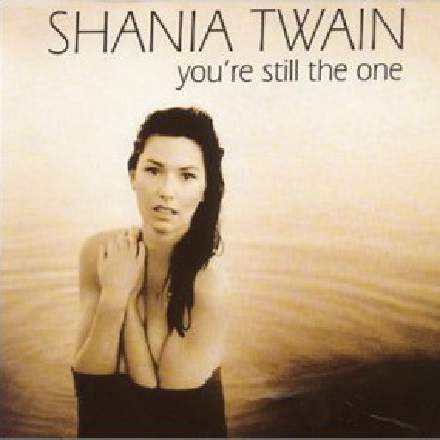
This wedding favourite was one of Twain’s biggest hits and showcases the talents of über–producer Robert John ‘Mutt’ Lange at his slickest and most mainstream. From a sonics perspective what really impresses me with this mix is the magnificent low end, with its lightweight, almost diffuse kick–drum sound adding just the right amount of definition to the understated yet warm and utterly dependable bass–guitar line. The low mid-range is also a thing of beauty, not just in terms of the way the lead vocal warmth is so wonderfully controlled, but also because of how the backing arrangement and mix sound have both been carefully hollowed out in the lower mid-range to allow so much vocal warmth to come through, despite the airy pop/country mix tonality overall. I also suspect that controlling the slightly nasal twang in Twain’s natural vocal timbre may not have been easy here, as a song like this wouldn’t really tolerate much of that, and the sibilance is very nicely judged too — bright enough to fit with the enhanced vocal highs, but never wearing on the eardrums.
However, what really slays me about this song are the backing vocals — many of which were apparently sung by Lange himself. The idea of their preceding the main vocal entry was already an inspired production hook, but then they suspend their opening Eb-major triad, first over ‘A’ flat (as 5th, 7th and 9th) and then over ‘F’ (as 7th, 9th and 11th) before finally resolving onto the dominant Bb-major chord — it’s a lovely bit of harmonic tension that really pulls you through the phrase. The subsequent homophonic BVs are deftly handled too. The accent of the “to”/“of” gives a great lift to the rhythmic backbeat there, for example, and emphasises the falling transition into the following downbeat. I think it was also a good call that the BVs don’t join the lead until after the “you’re still the” in the next phrase. It somehow makes Shania more the centre of attention to begin with, and yet also makes me notice the backing vocals more actively when they join in — some trick!
But that’s not all. I’ve commented more than once about how the homogenising effect of layering makes it important to perform multitracked backing vocals expressively, and you can really hear Mutt Lange breaking a sweat to do this for his middle–section ‘oohs’. Notice the little portamento in the opening chord, then the aspirated ‘h’ delineating each harmony change, and finally the fall–off into the drum fill that precedes the final choruses — all of which features feel like they’ve been further pushed forward in the mix with fader automation. Whatever else you might think about Lange’s productions, you certainly can’t accuse him of corner–cutting!
Finally, many people don’t realise that this song was actually released in two different forms: the original country mix, and a later International version (which is the one we Brits are more familiar with). If you’ve not heard the International version, I’d make a point of tracking it down, because I think it’s actually better than the original, replacing the slide guitar with a thicker–sounding flute–like synth which fills out the song’s texture better overall and makes the solo section more convincing — the basic sound is still weird enough to turn the listener’s head, but the musical line makes much more sense than the rather aimless reversed–sounding slide–guitar attempt.










